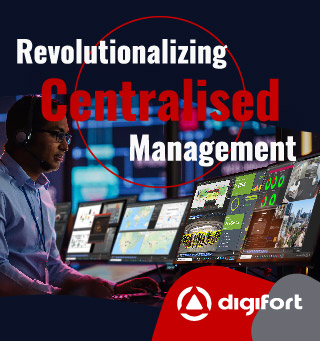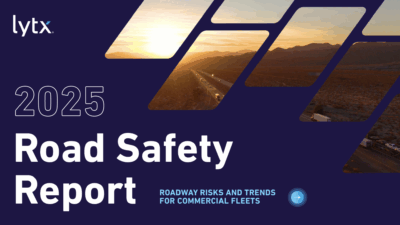Cybersecurity Meets Physical Security: Bridging the Gap in Critical Infrastructure.
In an increasingly interconnected world, where the digital and physical realms are inextricably linked, the traditional siloing of cybersecurity and physical security is no longer tenable, especially for critical infrastructure. From power grids and water treatment plants to transportation networks and financial systems, these vital assets are under constant threat from sophisticated adversaries who exploit vulnerabilities across both domains. To truly protect our societies, a paradigm shift is required: a comprehensive, integrated approach where cyber and physical security systems work in tandem to prevent, detect, and respond to breaches.
The Converging Threat Landscape
The rise of the Internet of Things (IoT) and Industrial Internet of Things (IIoT) has blurred the lines between the digital and physical. Operational Technology (OT) systems, once isolated and considered secure by an “air gap,” are now increasingly connected to IT networks and the internet. This convergence, while offering immense benefits in terms of efficiency and remote management, has also dramatically expanded the attack surface for critical infrastructure.
Attackers no longer need to physically infiltrate a facility to cause widespread disruption. A cyberattack can manipulate industrial control systems (ICS) and Supervisory Control and Data Acquisition (SCADA) systems, leading to physical damage, service outages, and even loss of life. Conversely, a physical breach – such as an insider threat or unauthorized access to a server room – can provide a pathway for devastating cyberattacks. The infamous Stuxnet worm, which physically damaged Iranian centrifuges through a cyberattack, stands as a stark reminder of this intertwined threat. More recently, the Colonial Pipeline ransomware attack demonstrated how a digital intrusion could halt the flow of essential physical resources.
The Imperative for Integrated Security
The recognition of this converged threat has driven the urgent need for “converged security” or “security convergence.” This holistic approach involves integrating cybersecurity and physical security strategies, technologies, and teams to create a unified defense posture. The benefits are numerous:
- Enhanced Threat Detection and Response: By correlating events from both cyber and physical security systems, organizations can gain a more complete picture of potential threats. For example, an unusual login attempt on an OT network combined with an anomaly detected by a physical access control system in a restricted area could immediately flag a highly suspicious incident that isolated systems might miss. This integrated intelligence allows for faster and more effective incident response.
- Reduced Security Gaps: Siloed security teams often operate with limited visibility into each other’s domains, leading to blind spots that adversaries can exploit. Convergence eliminates these gaps by fostering communication, collaboration, and a shared understanding of risks across the entire organization.
- Improved Efficiency and Cost Savings: Integrating systems and processes can streamline security operations, reduce redundant efforts, and optimize resource allocation. A unified security operations center (SOC) that monitors both cyber and physical events can lead to more efficient threat analysis and incident management.
- Strengthened Compliance and Resilience: Many regulations and industry standards now address both cyber and physical security. A converged approach helps organizations meet these compliance requirements more effectively and build greater resilience against a wider range of disruptive events.
- Better Risk Management: A comprehensive view of risks, encompassing both digital and physical vulnerabilities, enables more informed decision-making and the development of truly robust risk mitigation strategies.
Bridging the Gap: Key Strategies and Technologies
Achieving successful security convergence in critical infrastructure requires a multi-faceted approach, addressing organizational, technological, and procedural aspects:
- Organizational Alignment and Collaboration:
- Breaking Down Silos: This is perhaps the most crucial step. Organizations must foster a culture of collaboration between IT, OT, physical security, and executive leadership. Regular communication, shared goals, and cross-training are essential.
- Unified Leadership: Establishing a converged security leadership role, such as a Chief Security Officer (CSO) who oversees both cyber and physical security, can help drive integration and ensure a consistent security vision.
- Joint Incident Response Plans: Developing and regularly testing incident response plans that account for both cyber and physical impacts is vital. These plans should clearly define roles, responsibilities, and communication protocols for blended threats.
- Technological Integration:
- Centralized Security Information and Event Management (SIEM): A converged SIEM platform can collect and analyze data from various cybersecurity tools (firewalls, intrusion detection systems, endpoint protection) and physical security systems (access control, video surveillance, alarm systems). This allows for correlated analysis and real-time alerts.
- Integrated Access Control and Identity Management: Digital credentials (e.g., smart cards, biometrics) used for physical access should be tightly integrated with cybersecurity’s identity and access management (IAM) systems. This ensures consistent authentication, authorization, and auditing across both domains.
- Physical Security Hardening with Cyber Principles: Physical security devices, such as IP cameras, sensors, and IoT devices, must be treated as network endpoints and secured with cybersecurity best practices, including strong authentication, regular patching, network segmentation, and encryption.
- Cyber-Physical Threat Intelligence: Sharing threat intelligence that encompasses both cyber and physical attack vectors can provide organizations with early warnings and insights into emerging threats.
- Proactive Risk Management and Continuous Monitoring:
- Holistic Risk Assessments: Conducting comprehensive risk assessments that identify vulnerabilities and potential attack paths across both cyber and physical systems is fundamental. This includes evaluating the interdependencies between IT and OT environments.
- Vulnerability Management: A unified vulnerability management program should address weaknesses in both software and hardware, including physical security systems.
- Continuous Monitoring and Auditing: Implementing continuous monitoring of both cyber and physical environments helps detect anomalies and potential breaches in real-time. Regular audits and penetration testing, including “red team” exercises that simulate blended attacks, are essential to validate security controls.
- Security by Design: New critical infrastructure projects and upgrades should incorporate security considerations from the initial design phase, encompassing both cyber and physical aspects.
Challenges and the Path Forward
Despite the clear advantages, achieving full security convergence is not without its challenges. These often include:
- Cultural Differences: Bridging the historical divide between IT and physical security teams, who often have different skillsets, priorities, and reporting structures.
- Legacy Systems: Many critical infrastructure facilities rely on older OT systems that were not designed with modern cybersecurity in mind, making integration complex.
- Budget and Resource Constraints: The initial investment in integrated systems and personnel training can be significant.
- Lack of Standards and Best Practices: While progress is being made, universally adopted standards for cyber-physical security integration are still evolving.
Overcoming these challenges requires strong leadership commitment, a phased implementation approach, and a focus on continuous improvement. Organizations should prioritize high-risk areas, leverage pilot programs, and invest in training programs that bridge the knowledge gap between cyber and physical security professionals.
The future of critical infrastructure security hinges on the successful convergence of its physical and digital defenses. As threats continue to evolve and become more sophisticated, the ability to see, understand, and respond to attacks that traverse both realms will be paramount to safeguarding the essential services that underpin our modern world. Bridging the gap between cybersecurity and physical security is not merely a technical undertaking; it is a strategic imperative for national security and societal resilience. Sources


















